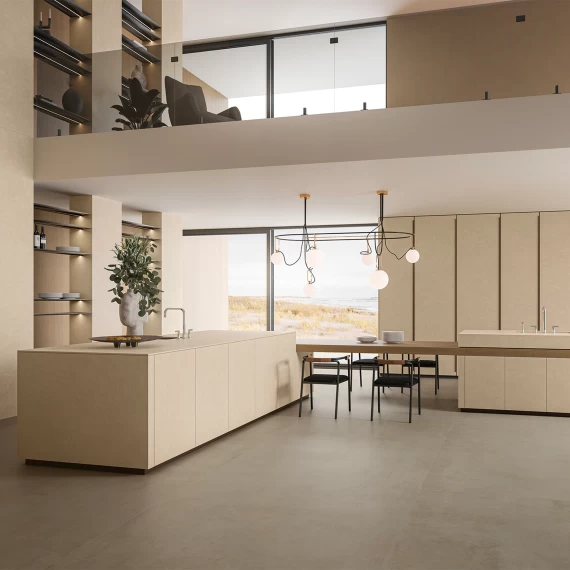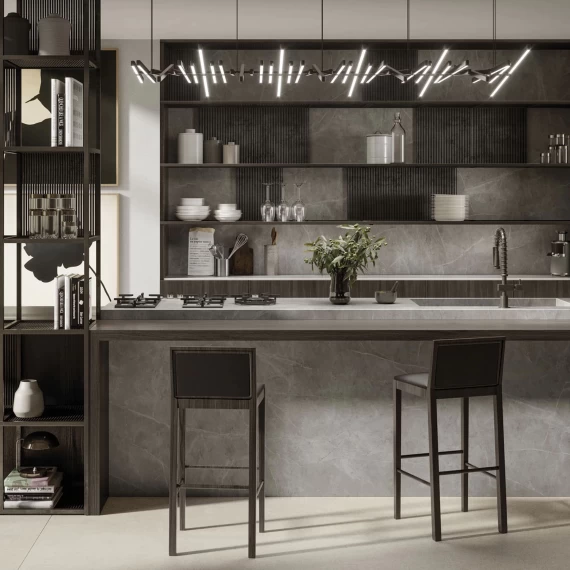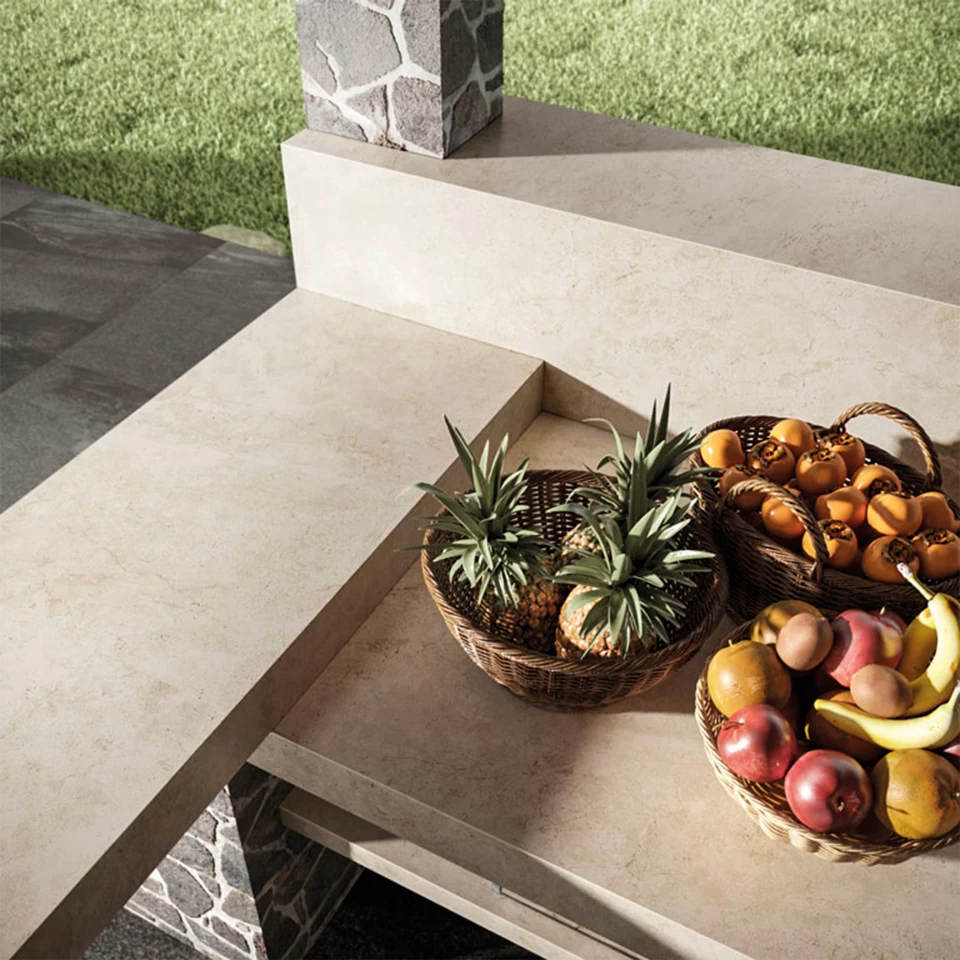
Ceramic vs porcelain large tiles: what's the difference
Large ceramic and porcelain tiles are reliable design staples that remain popular among interior designers and architects. However, these two material categories have differences to take note of.
Ceramic tiles are durable and can easily be cut and installed. They are available in various shade and pattern details. Large format porcelain tiles also provide several color tones and longevity, but their key difference is they can be used for outdoor applications too, which ceramic tiles are not ideally suited for. Also, porcelain tiles offer a higher level of moisture resistance. Here are some more considerations when you need to choose between ceramic and porcelain surfaces for projects.
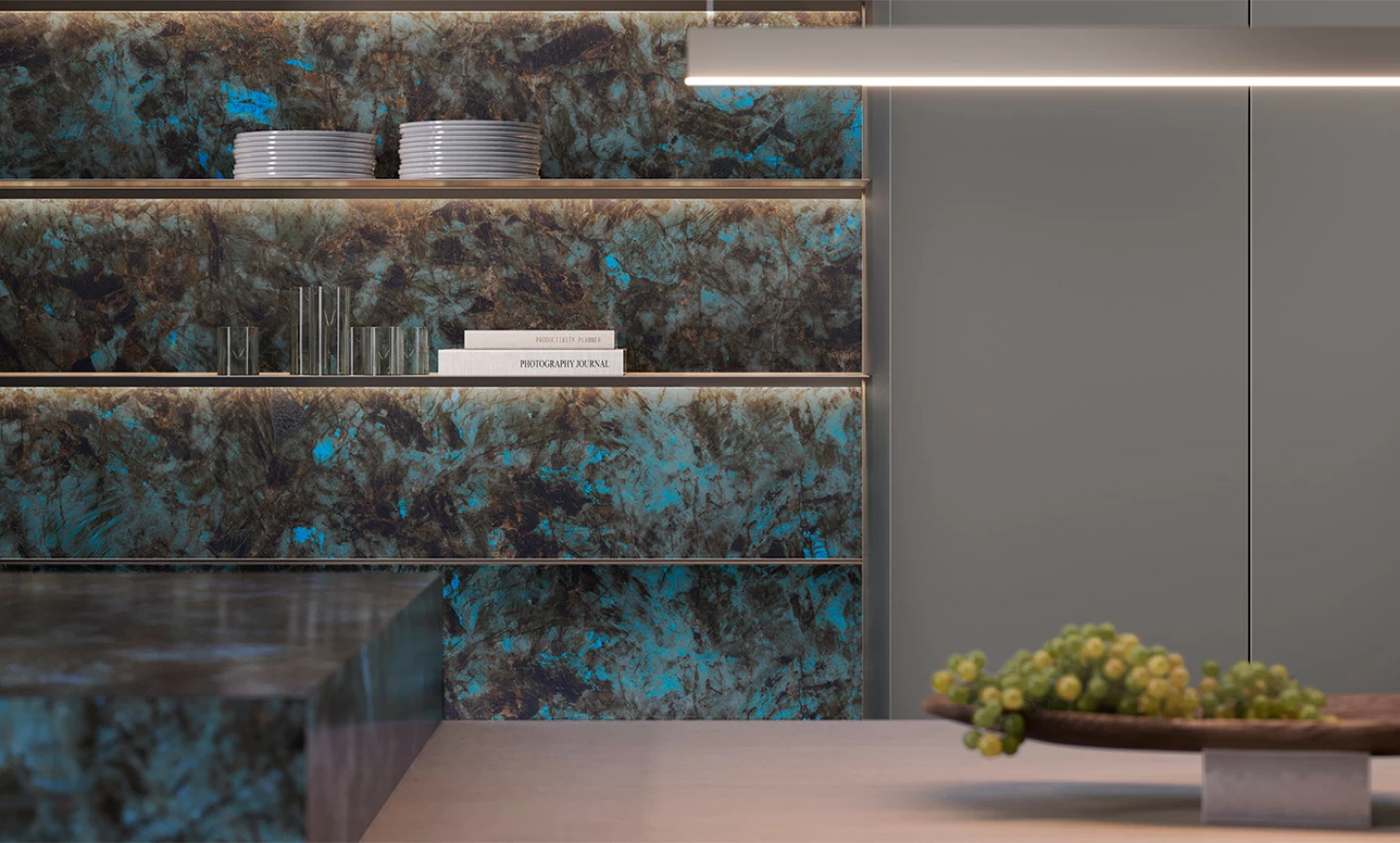
Difference between porcelain and ceramic
When it comes to choosing between ceramic vs porcelain tile applications, you must consider how these materials were made and how that impacts where they should be used. Porcelain tiles are produced using clay with a fine grain and minerals, which are then fired at very high temperatures. The result is materials that are very durable and dense, perfect for high traffic areas. Ceramic tiles, on the other hand, are made from clay and other materials. These tiles are usually softer than porcelain tiles as they are fired at lower temperatures, which means they are better suited for wall covering.
Is porcelain ceramic, considering how these materials are made? In a way, porcelain is a type of ceramic; however, the different materials used and how these applications are shaped sets them apart from one another.
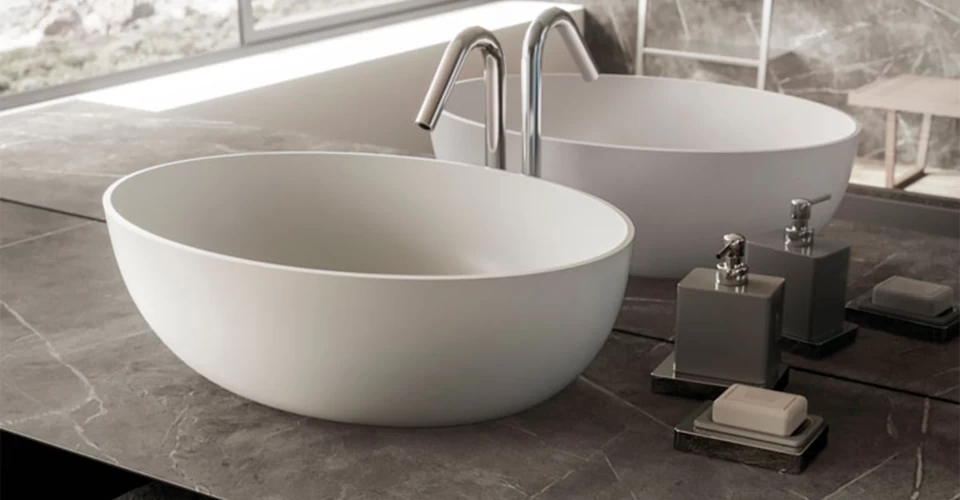
Ceramic tiles: pros and cons
Ceramic tiles, although versatile, are better suited as wall coverings than for floors. The reason for this is that these materials are quite hard, and although they can be easily cleaned, they will be better suited as wall coverings, especially white-body ceramic wall tiles that can easily match other tile surfaces.
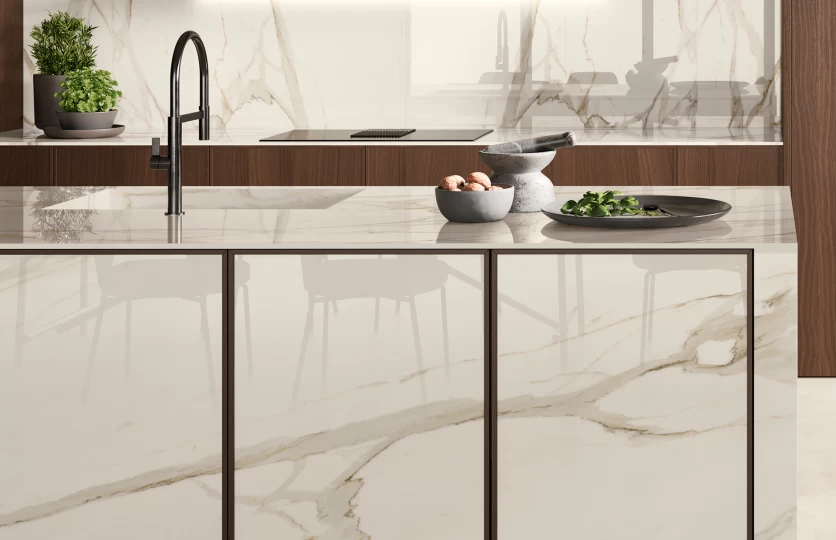
Porcelain tiles: pros and cons
Large format porcelain tiles are incredibly durable and low maintenance. Thanks to their non-porous surfaces, they are easy to clean and low maintenance. These materials can be used both indoors and outdoors, and have a high water resistance. They are fantastic flooring choices for very high traffic areas and offer slip-resistance. Porcelain tiles are also a good choice for rooms that often have high temperatures, such as kitchens or other spaces that get direct sun exposure. Equally so, they are also great considerations for floors with underfloor heating. Eco-minded designers can also rest assured: Porcelain tiles are sustainable solutions that can be used for both residential and commercial projects.
If you are planning to install large format porcelain tile surfaces, it is best to get professional tilers in. The reason for this is that porcelain tiles are thicker and will need specialized tools for cutting as well as installing. Flooring specialists will also know which compounds will be needed to ensure tiles are perfectly fixed to the floor.
Ceramic tile vs porcelain tile: what's the best for durability
Ceramic tile vs porcelain tile durability will depend on where these materials are used. A good example is porcelain vs ceramic flooring. Porcelain tiles are highly durable options for busy spaces and high foot traffic, while softer ceramic tiles would last longer in areas that have less traffic.
Therefore, it is not a question about what's better porcelain or ceramic tile: rather, it is where these materials will be best to use, and which conditions they are best suited for.
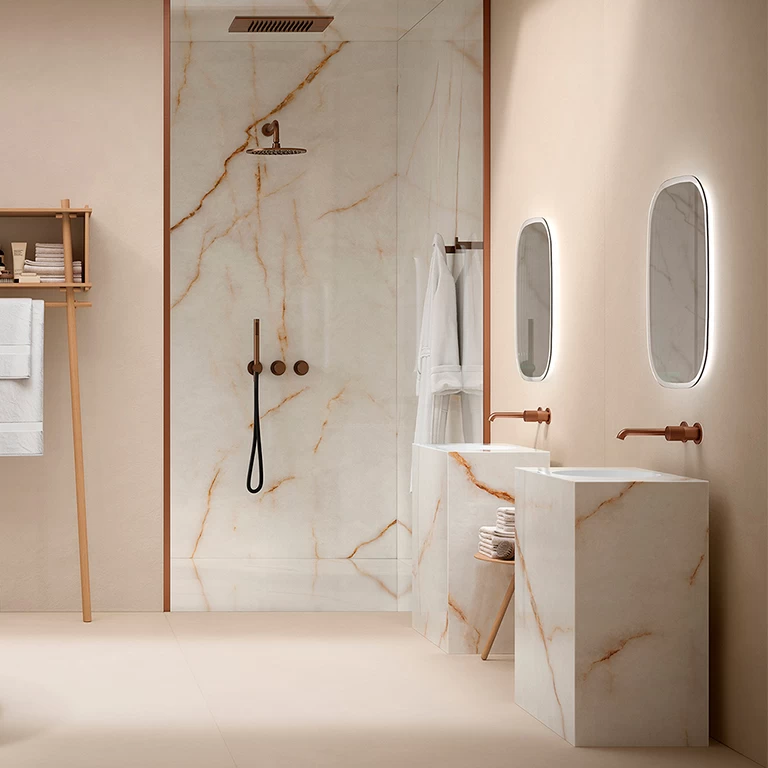
Ceramic or porcelain slabs for a shower?
The choice of picking ceramic or porcelain tile for shower applications comes down to moisture resistance. Thanks to low water absorption, porcelain slabs would be better suited for showers, with minimal maintenance and exceptional durability.

Porcelain or ceramic slabs for the bathroom floor?
White-body ceramic wall tiles are perfect solutions for bathroom walls, whereas porcelain tiles are great flooring solutions, thanks to their higher water resistance.
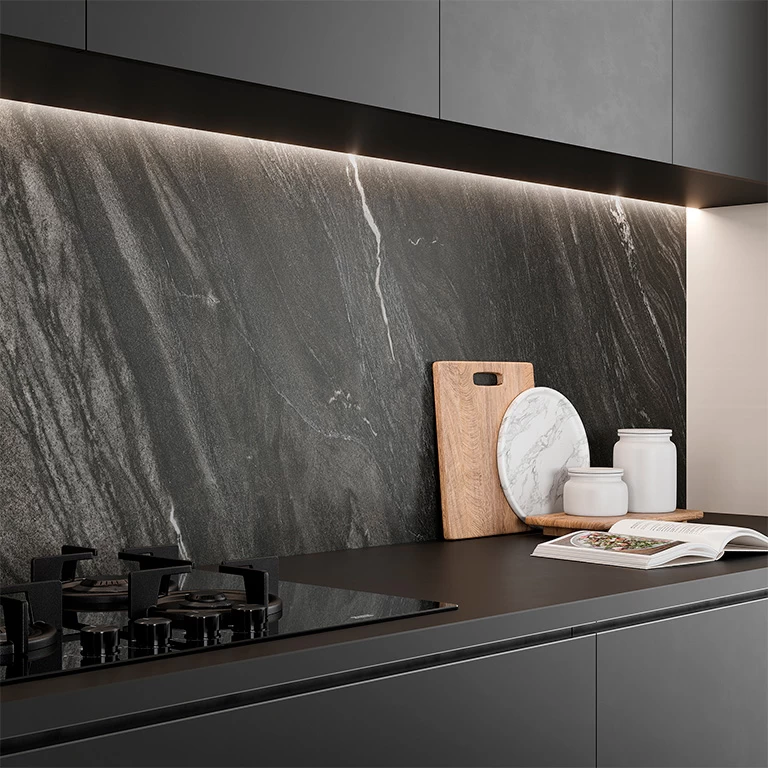
Ceramic vs porcelain slabs for kitchen backsplash
One area where porcelain slabs truly stand out as a top choice for flooring and walls is the kitchen. If you want to install a porcelainkitchen splashback to match a porcelain kitchen worktop or are starting a kitchen project from scratch, these materials are great choices. They have a high level of stain resistance and can be easily wiped down, increasing their appeal for spaces where there are often splashes and spills due to cooking and preparing meals.
Whether you choose ceramic or porcelain tiles for your projects, both options can provide beautiful results. Discover today how Atlas Plan can help you achieve ideal ceramic and porcelain tile surfaces.
